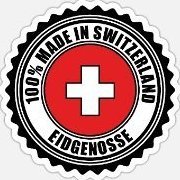3-Phase Residential Electricity?
-
Recently Browsing 0 members
- No registered users viewing this page.
-
Topics
-
-
Popular Contributors
-
-
Latest posts...
-
122
Gavin Newsom
When did Trump convince you to become a socialist? Or have you always been one? -
1,673
Updates and events in the War in Ukraine 2025
Ukraine commemorated their day in a good way with strikes on Kursk nuclear plant Ukraine drone strikes hit Kursk nuclear plant and Russian fuel hub https://www.msn.com/en-xl/asia/pakistan/ukraine-drone-strikes-hit-kursk-nuclear-plant-and-russian-fuel-hub/ar-AA1L6EYO?ocid=msedgdhp&pc=LCTS&cvid=68abc35173854248b421fec911a145d4&ei=19 -
24
Report Dream Crushed: British Expats’ Thai Retirement Nightmare
Yes. Does anyone know? Looks like the lady on his right is his wife, the one seated next to him. Interesting photo. -
24
Report Dream Crushed: British Expats’ Thai Retirement Nightmare
There are scammers at every turn. The moral of this story is to assume the worst, mistrust and verify at every increment with skepticism and don’t believe lawyers on both sides until everything has been analyzed. -
15
Crime Brazilian Tourist Arrested in Patong After Rooftop Incident
He merely attempted to instruct the massage therapists and the gathering outside in a few Samba steps. As the principal dancer, his position is naturally atop a roof. -
38
-
-
Popular in The Pub




.thumb.jpg.b54783ad387f65d779e04f535fcfeee9.jpg)











Recommended Posts
Create an account or sign in to comment
You need to be a member in order to leave a comment
Create an account
Sign up for a new account in our community. It's easy!
Register a new accountSign in
Already have an account? Sign in here.
Sign In Now